![Jiu Valley: is there a life after coal? [GALLERY]](https://www.foundintransition.eu/wp-content/uploads/2024/01/wieza-wyciagowa-i-chmury-scaled-1200x675-1-800x450.jpg)
There were, so far, three key stages in history of Jiu Valley, a region between mountain ranges, in the very heart or Romania. First, it was a remote, scarcely populated rural area. Then, a growing coal region, the key industrial area in independent Romania. After that, a scene for rapid industry closures and social disaster. Is there a next stage on the horizon? Could the idea of just transition become reality here, after so much has been destroyed? There are people who believe it is possible – and also these who lost any hope.
All the pictures in the gallery were taken by Małgorzata Kulbaczewska-Figat during her journalist travel to Jiu Valley in October 2023.
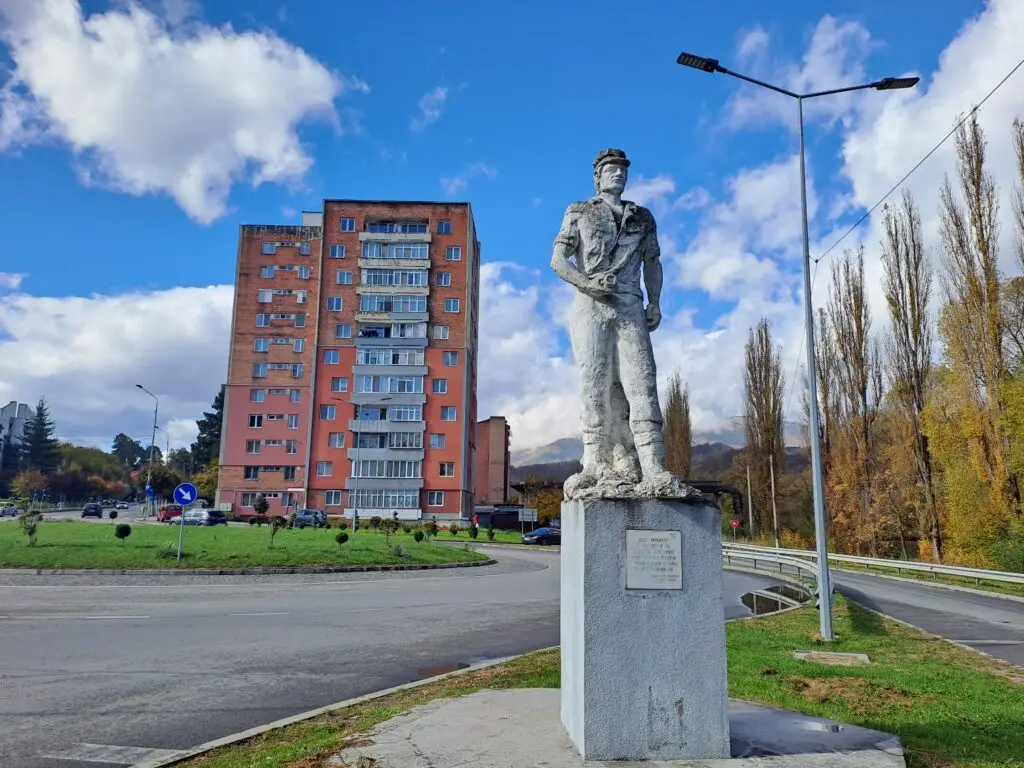
A worker made in stone conmemorates daily labour of those who lived in the blocks of flats behind him: miners working in the Lupeni mine, one of the biggest in Europe. First in Austro-Hungary times, then in Socialist Romania, thousands of people came to get jobs in the Jiu Valley mines. In the Ceausescu era, working underground was dangerous, but at the same time attractive due to high salaries and relative welfare.
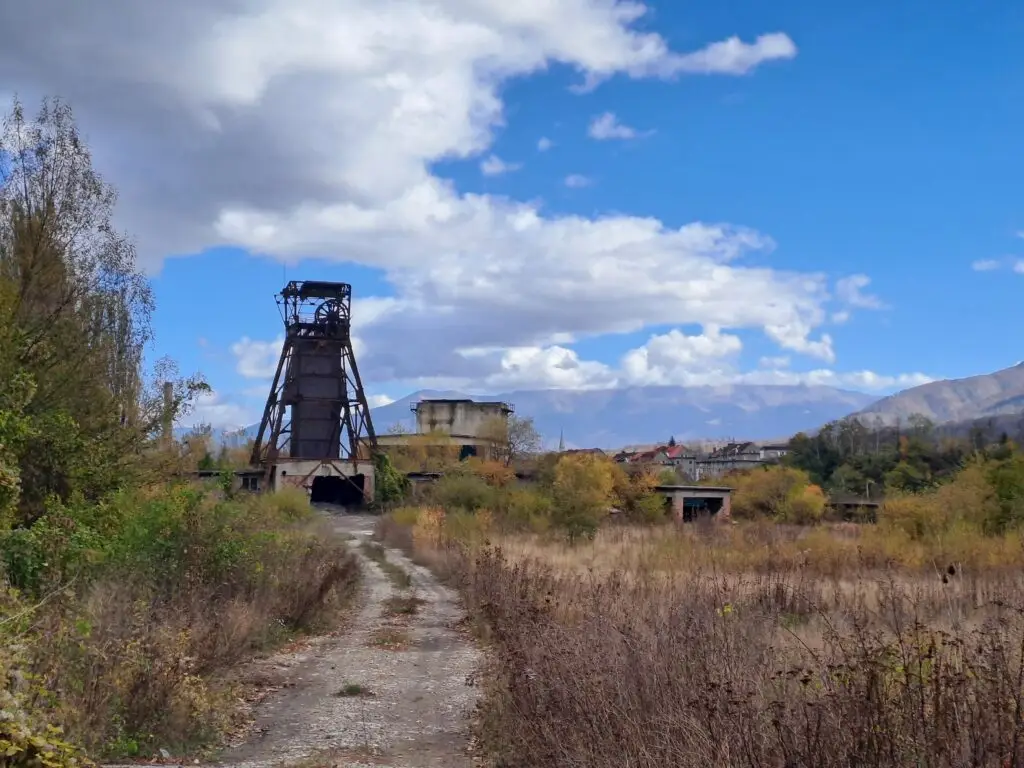
There were dozens of coal mines in and between the cities of Jiu Valley. Petroșani, Lupeni, Uricani, Vulcan, Petrila, Aninoasa all grew together with mining, starting from the second half of the 19th century. The mountain landscape was quickly marked by headframes, like the one in the photo in the outskirts of Lupeni. Located above the mine shafts, they once served to hoist the materials, machines and workers from the underground.
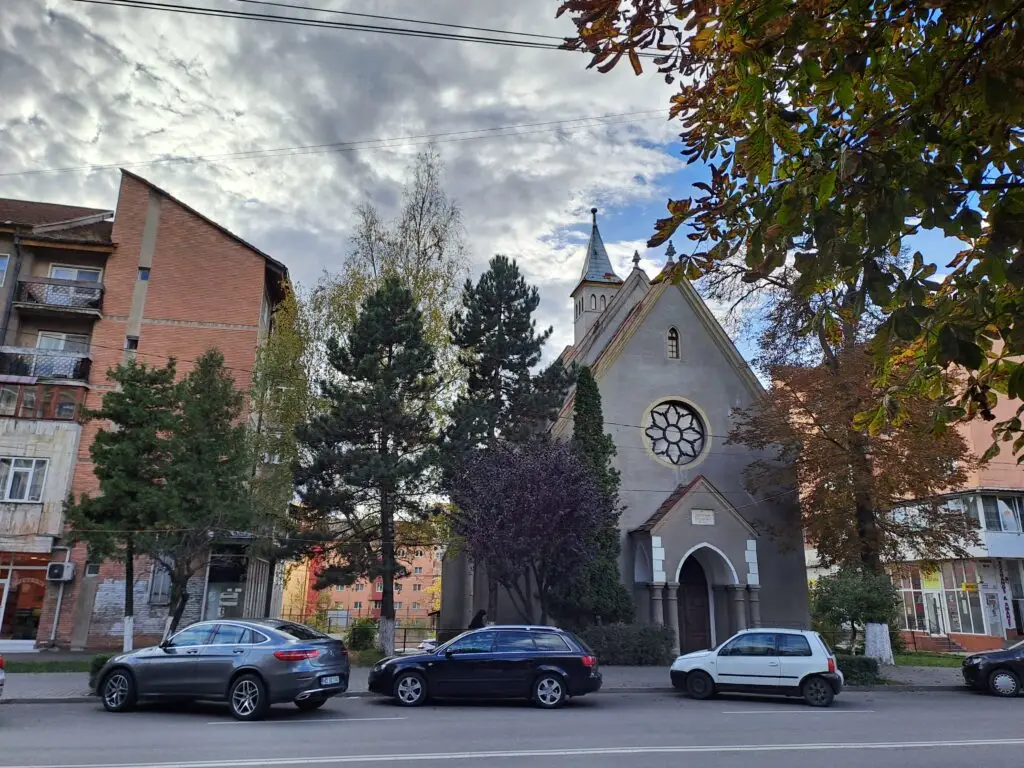
Churches of different denominations are to be found in every city and town in the Jiu Valley. Orthodox, Catholic, Reformed, Unitarian (like the one in the photo, in the main street of Petroșani) – they served religious needs of the very diverse community of miners and their families. Romanians, Hungarians, Czechs, Poles, Slovaks, Ukrainians – all these nationalities of Austro-Hungarian Empire worked there. Today, apart from the Romanian Orthodox churches, most of the churches are not active.
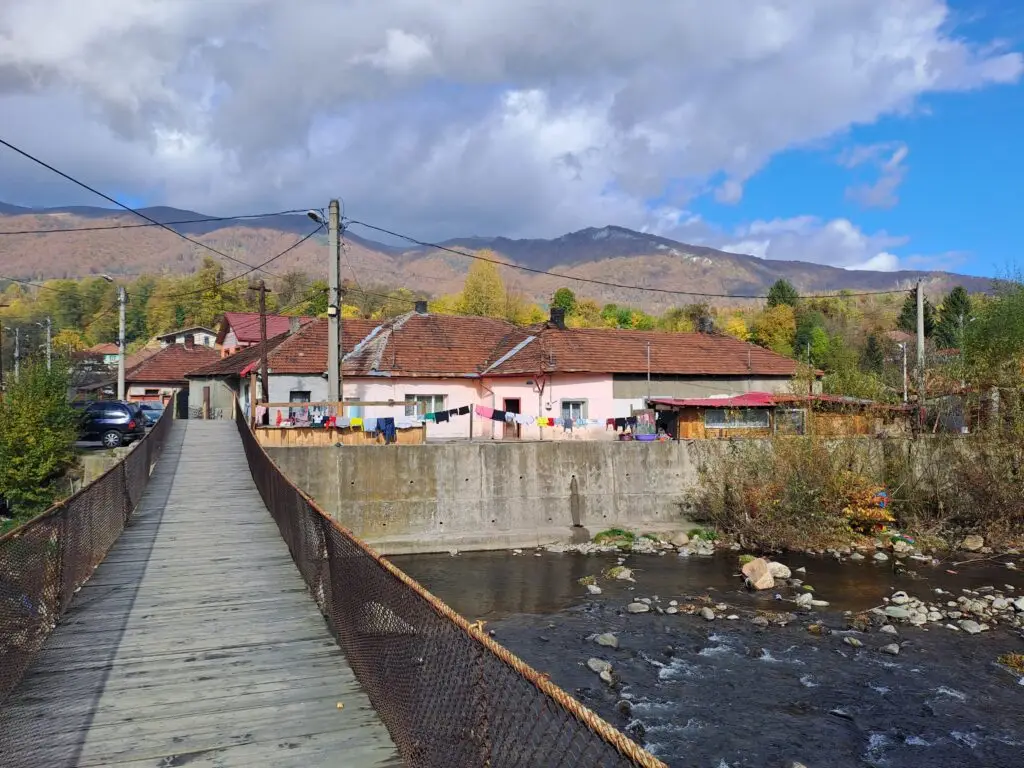
In 1997, there were 45 thousand workers employed in the mines. Half of them were laid off in this one fateful year. – They were promised they would open their own businesses, but this could not have succeeded – recalls Alexandru Kelemen, a former social worker, now engaged in the just transition process planning. With thousands of people without jobs and all savings being gradually exhausted, former miners fell into poverty and the mining settlements and colonies became marginalized communities.
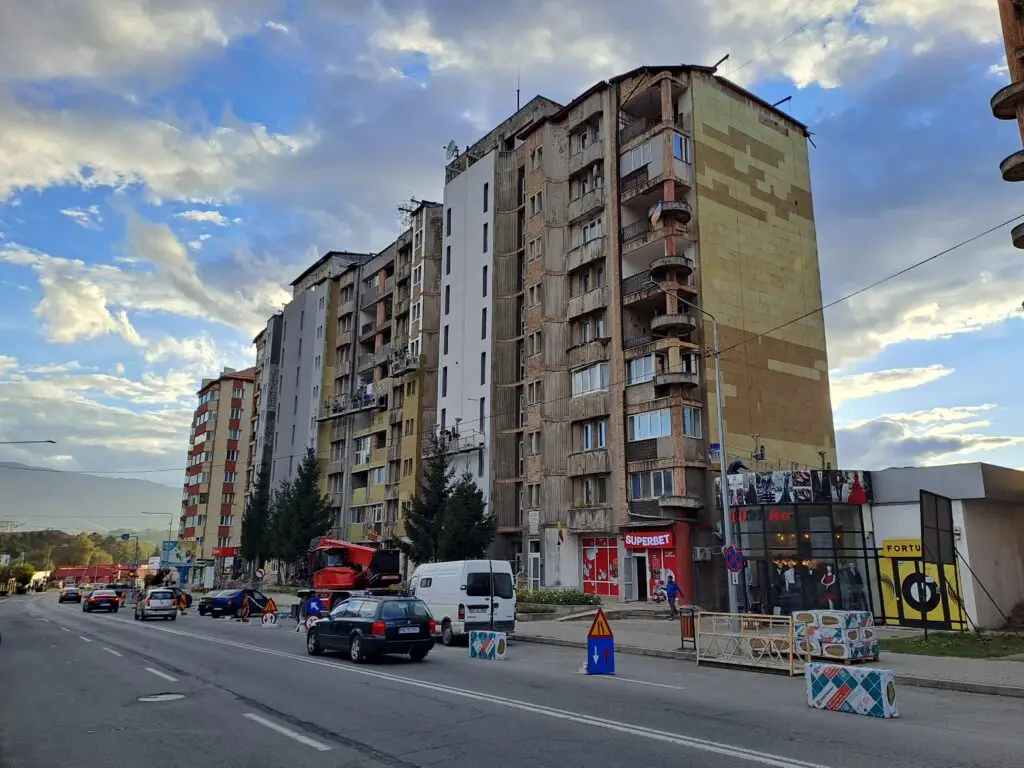
In Socialist Romania, new blocks of flats were rapidly built in Jiu Valley towns to accomodate a growing mass of workers. Today most of them require repairs, first of all to assure a better energetic efficiency. Energy poverty is one of the most serious social issues among the people who live in the Valley.
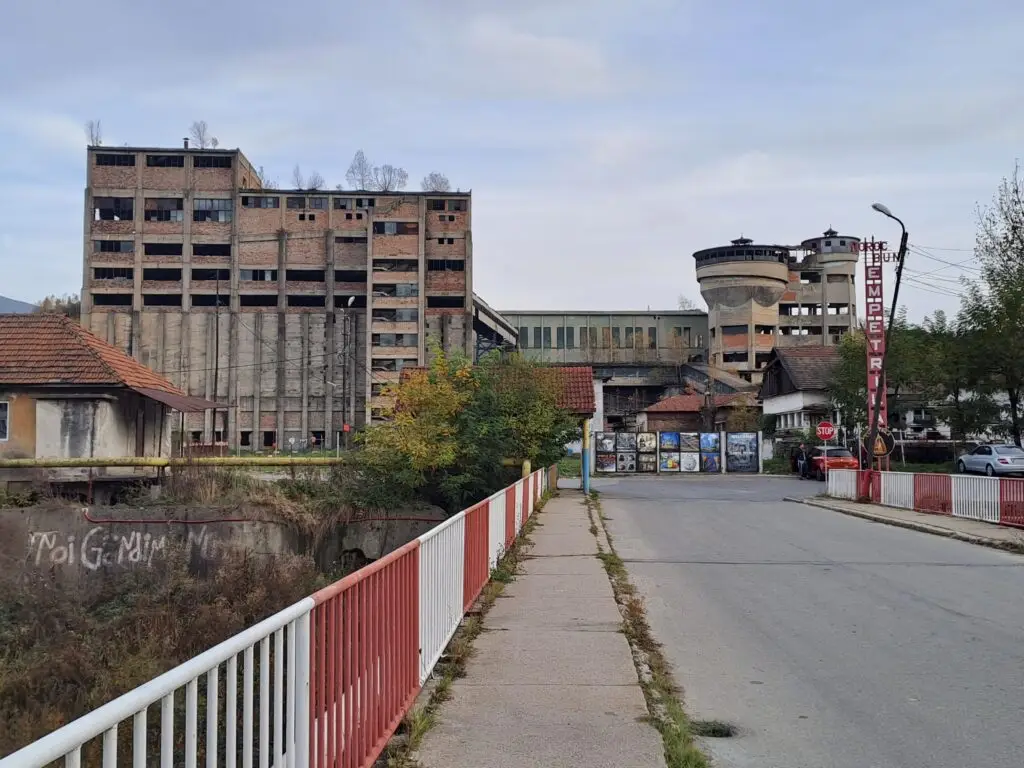
Petrila mine operated from 1859 until 2015. At the peak of exploitation, miners extracted 1,2 tons of coal per year and the staff counted 55,000 people. After the closure, it was expected that the mine buildings would be razed to the ground. They were not, thanks to the initiative and struggle of Ion Barbu, ingenieur and artist, and activists now forming the Planeta Petrila group.
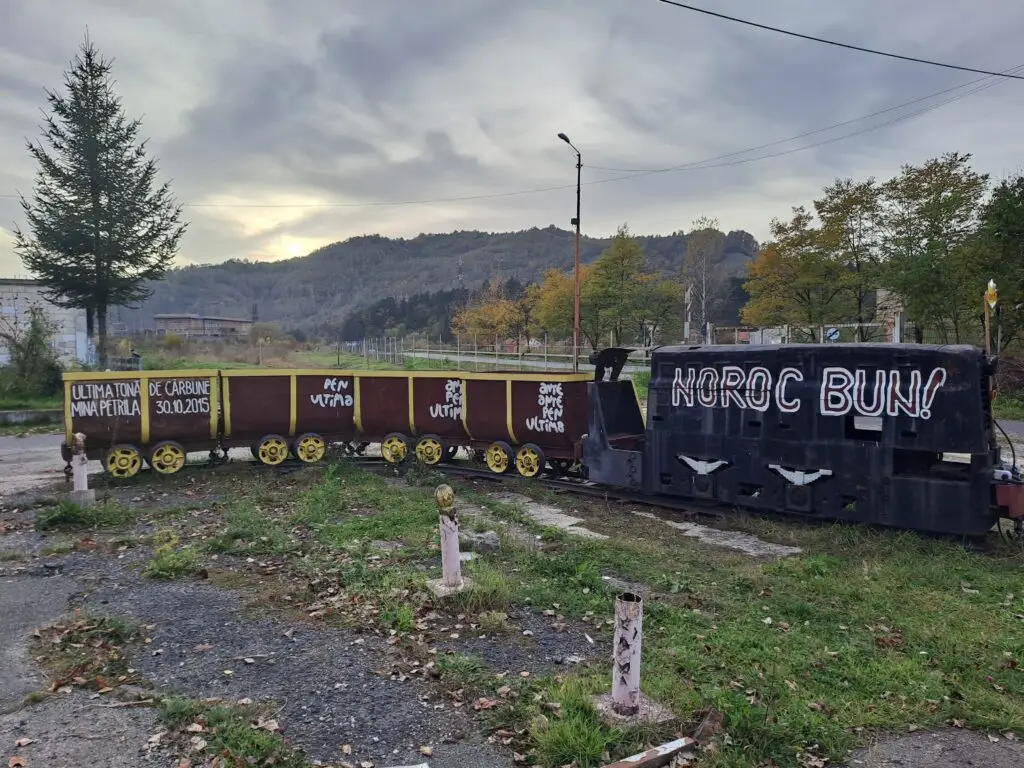
Good luck! – the miners’ train wishes to the visitors of Petrila. A traditional miners’ greeting is accompanied by vagons carrying ‘the penultimate’ and ‘ultimate’ ton of coal from the mine. One of local artists produces rings with a piece of coal coming from this place. I get one as well.
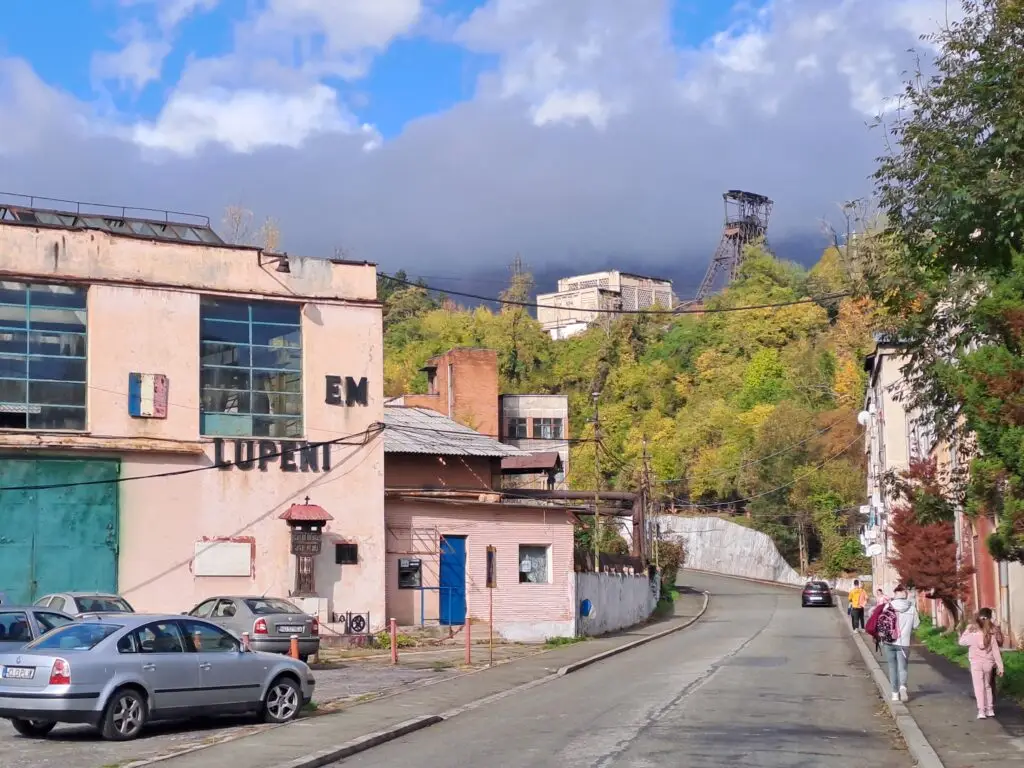
The Lupeni mine still rises above the town, but wild trees grow from the abandoned buildings’ roofs. Former miners’ canteen and other buildings have fallen into disrepair long ago. The memorial plagues on one of the halls conmemorate the 1979 miners’ strike and the miners who died in the workplace. There are similar memorials in every mine in the Jiu Valley. The 1979 strike started mainly on social grounds, but the plaque says that miners fought ‘for faith and fatherland’. In the end, the democratised post-1990 fatherland has not treated them really well.
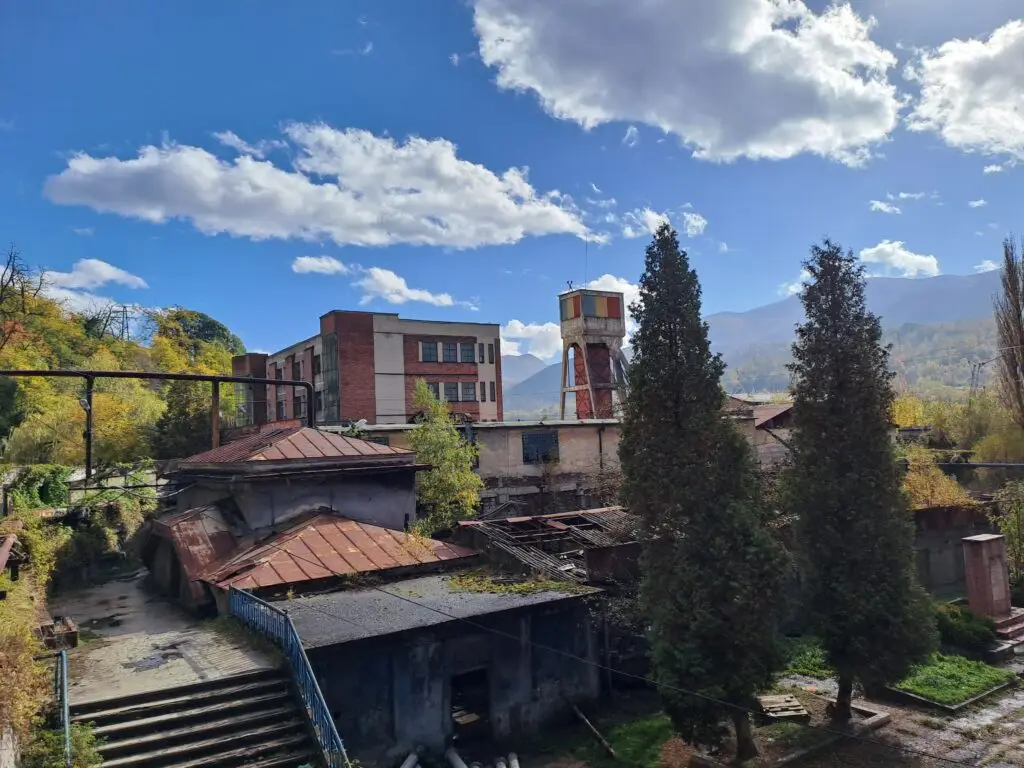
There is a plan to save some buildings in the Lupeni complex, Alexandru Kelemen tells me. However, saving industrial heritage requires huge financial effort, which cannot be born entirely by local communities or municipalities. Mines used to bring a lot of money to local budgets – now these money are no longer coming.
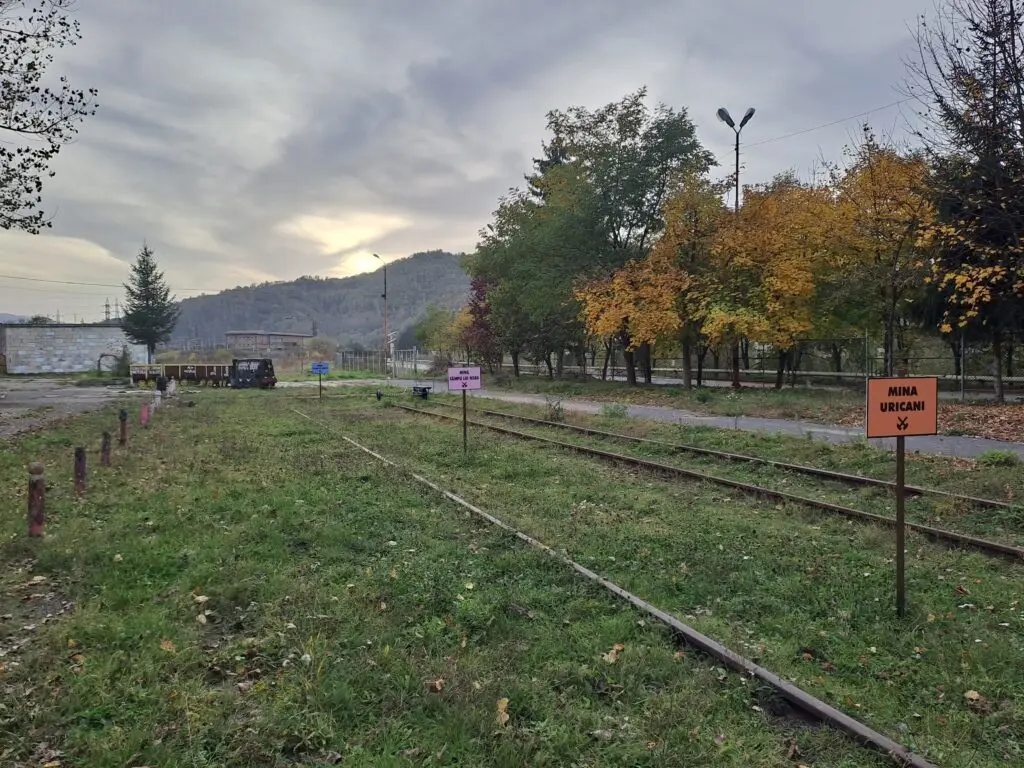
Other mines, closed decades ago, have disappeared without a trace. Only these small signs in Petrila remind of short-lived Câmpu lui Neag mine, expanded by the end of 80′ and closed less than 20 years later, or Uricani, once one of the biggest in Romania.
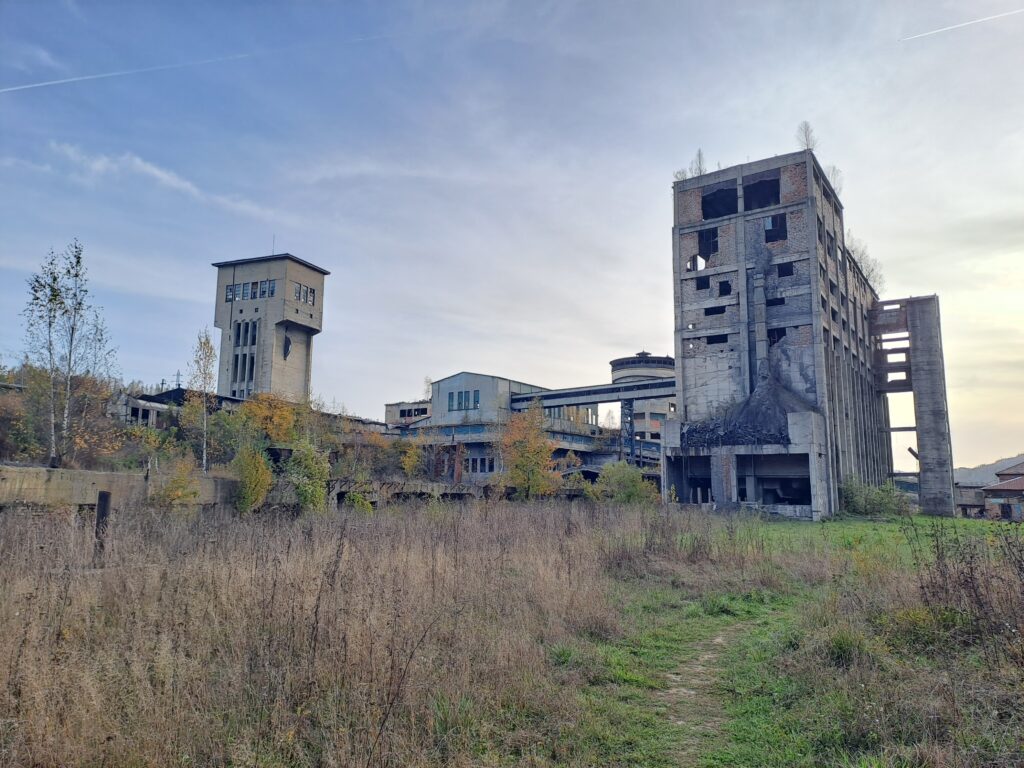
The Planeta Petrila team hopes to reactivate local rails to carry tourists, to open a restaurant and bar, to organise even more cultural events here. At the moment, most of the former mine buildings can be only preserved from collapsing. Will the Just Transition Fund bring about a substantial step forward? This is what the activists hope.
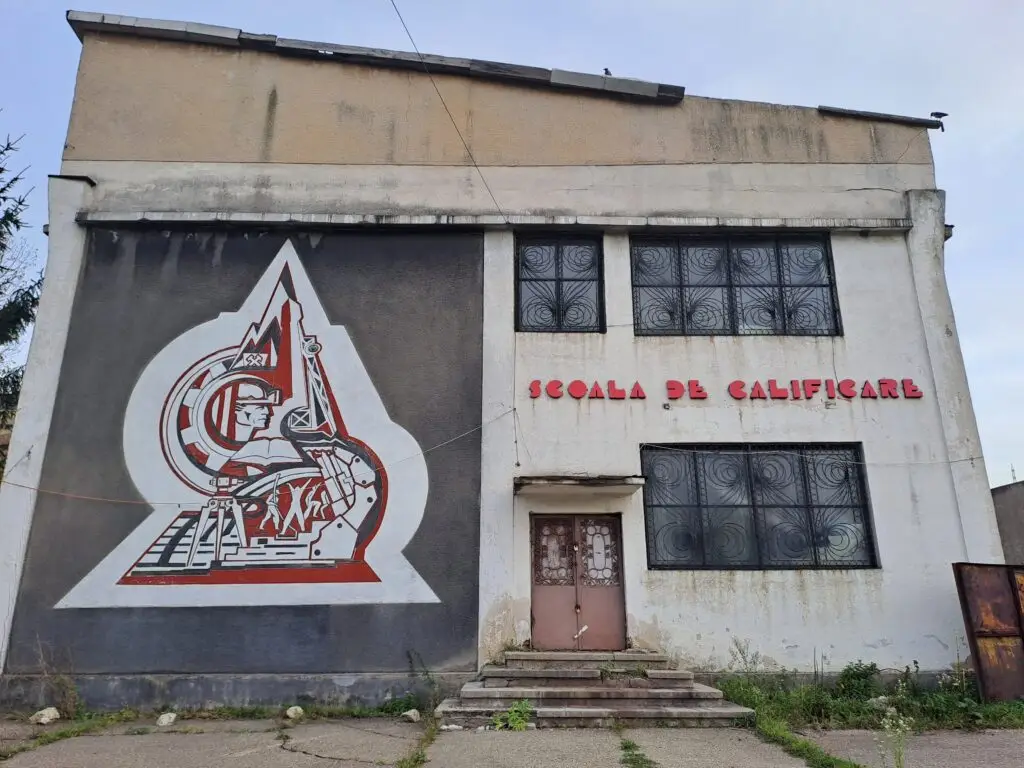
In the past, coal mining regulated the entire life in the Jiu Valley. If someone was born here, it was more or less clear that his/her life would be related to mining, just like their families were connected to them. Mining schools like the one in Petrila, now inactive, waited for new people to be trained. ‘When the mines were closed, people lost a compass’, Ina Berar of Planeta Petrila tells me. The association organizes cultural events on the Miners’ Day, and they are always attended by people wishing to remember that times.
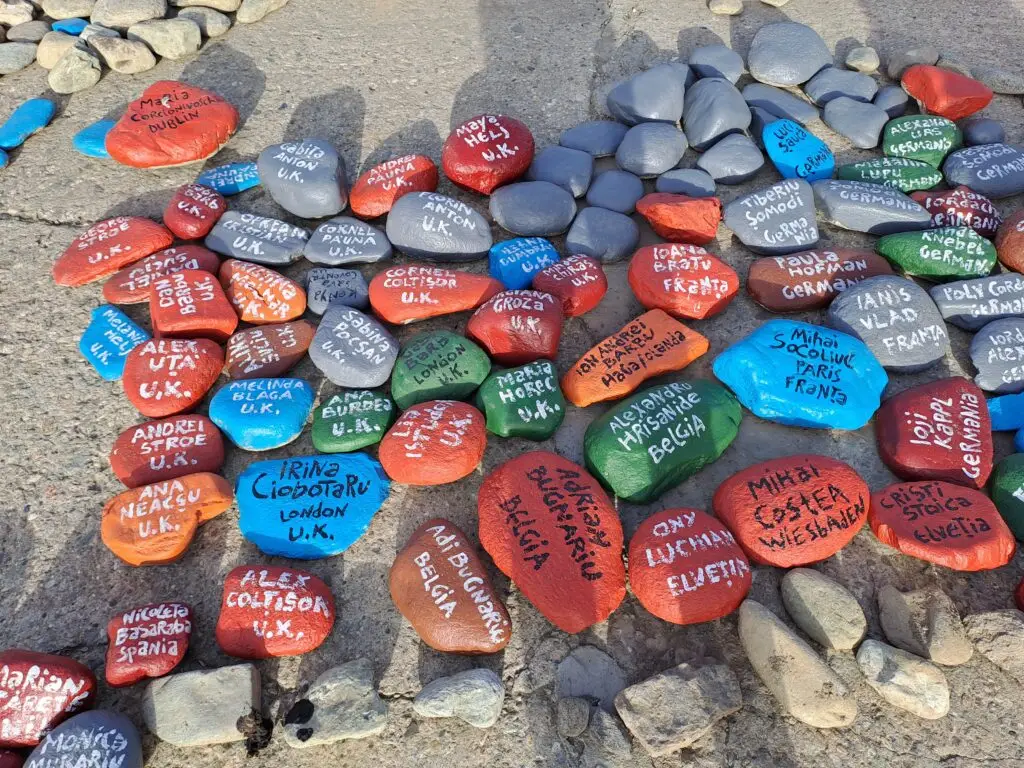
With the closure of mines, the great migration out of Jiu Valley started. Stones assembled by Planeta Petrila were painted and marked with names of those who moved out, and with names of places where they are now. One can find locations from neighbouring countries, all European countries, but also Australia, Canada or Russia.
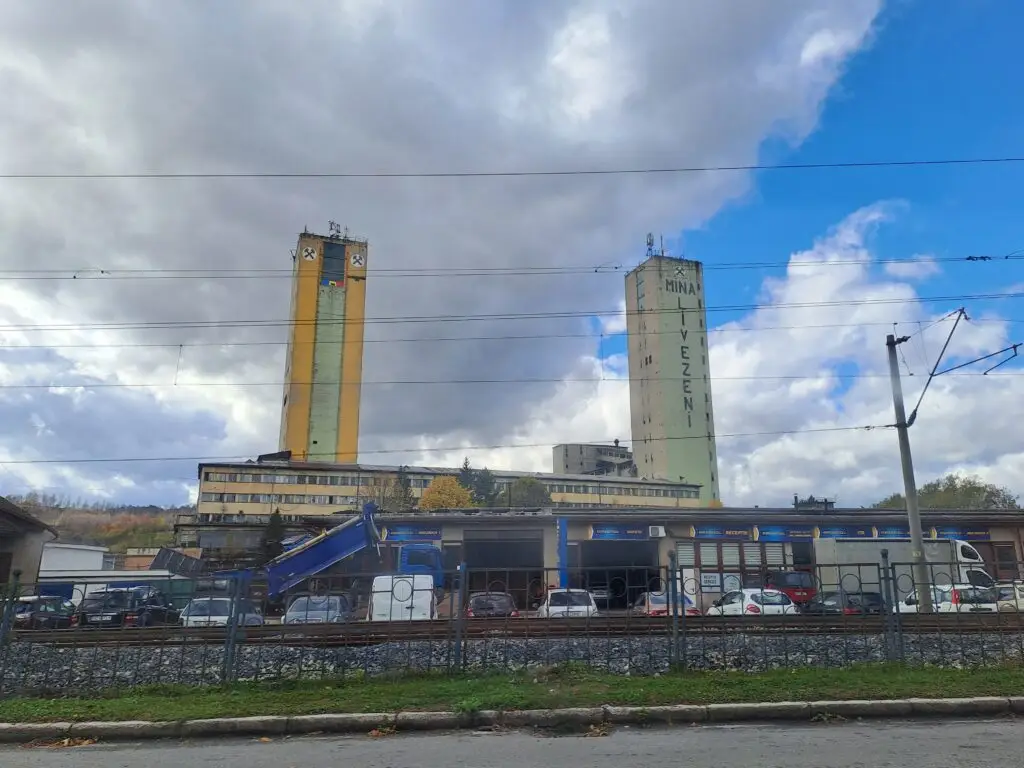
Livezeni is one of the last mines still active, but its closure is planned to come within a few years. No more than 2,000 workers are still employed in the mining sector in the Jiu Valley and this number is only expected to fall. Boby Munteanu, leader of the Cartel Alfa mining trade unions in Gorj region, tells me how his organisation fights for keeping these workplaces until scheduled closure date, for miners’ retirement at 53 and for proper safety conditions. In his view, just transition of the Jiu Valley is just a vision in which no one among the ordinary people believes.
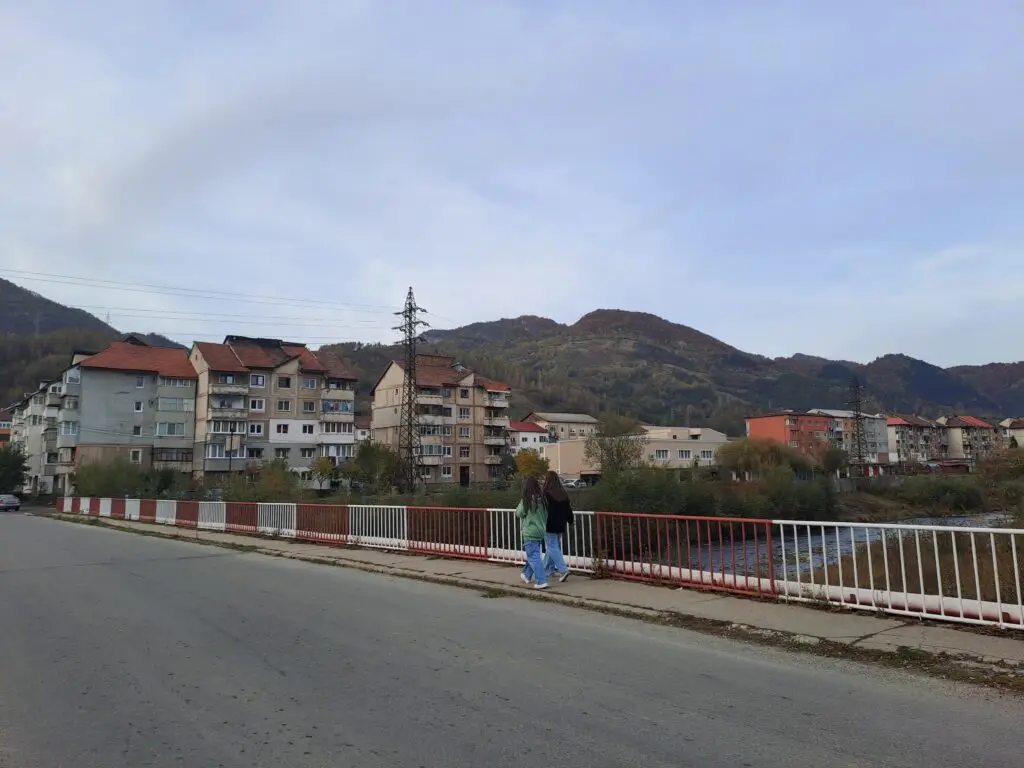
Trade unionists remember very well how people in the Jiu Valley were promised great things, which never materialized. Miners did not become succesful businessmen in Romanian capitalism. Tourism has been named as potential income source for the Valley for more than 30 years, but so far much more has been said than done.
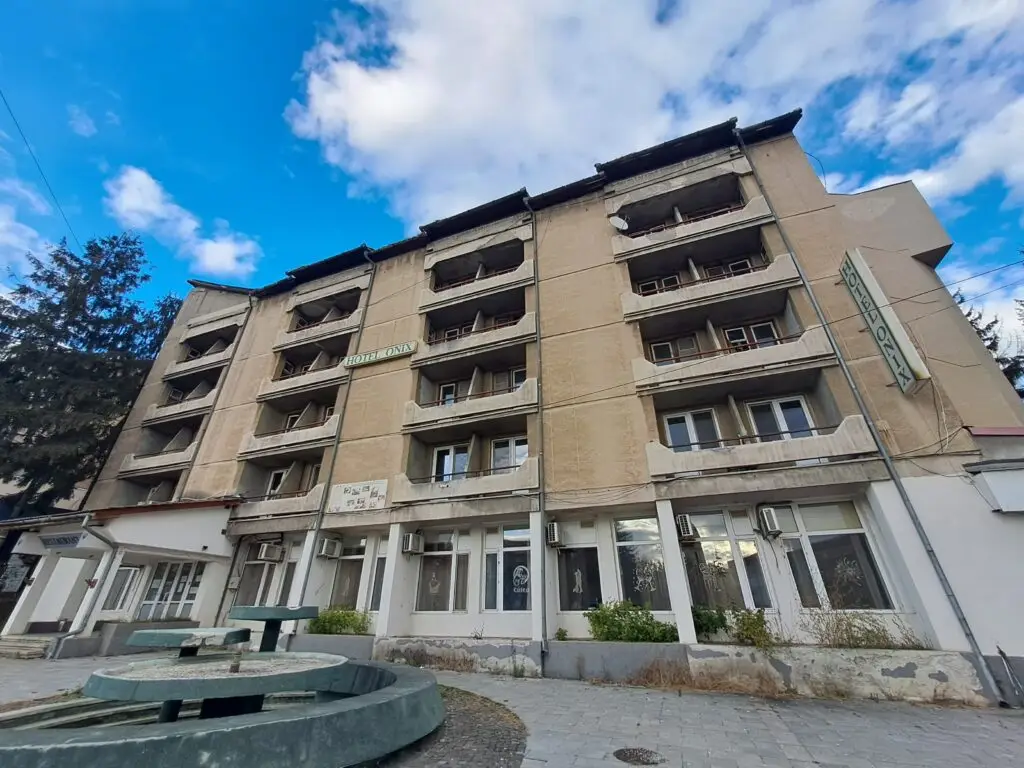
People who might enjoy breathtaking mountain landscapes cannot come in large numbers due to lack of accomodation. Hotel Onix in Petrosani has not welcomed anyone for years, nor there are numerous sleeping places in the neighbouring towns. Would the situation change, when first subsidies for small and medium entreprises are allocated?

It takes many hours to travel by train from Petrosani to Bucharest, Timisoara or Cluj. The train station has been partially modernized, but the pedestrian bridge over the rails shakes strongly when I walk it. Remote location and bad connectivity is a key challenge in the projected process of just transition.
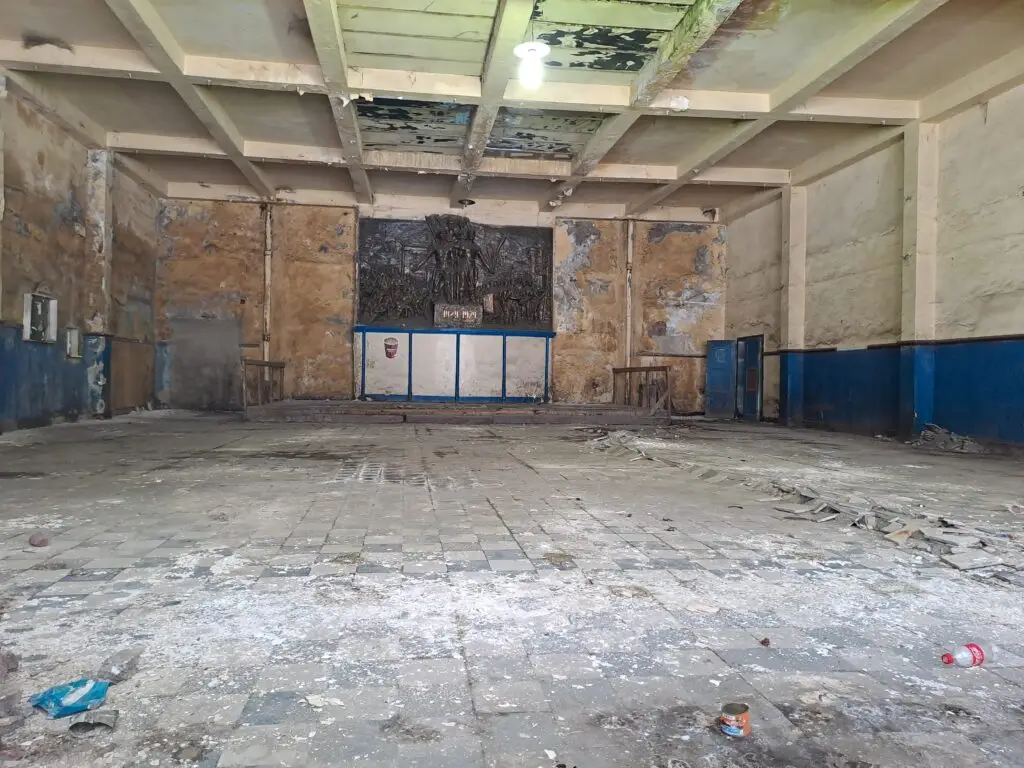
The monumental panneau in one of the empty Lupeni mine halls conmemorates the 1929 strike. The miners demanded pay rises for their hard work, an end to employing people under 18 years old underground and better working equipment and wear. After a violent confrontation between workers and gendarmes, the protest was suppressed. Between 16 and 58 miners were fatally shot and over a hundred wounded.
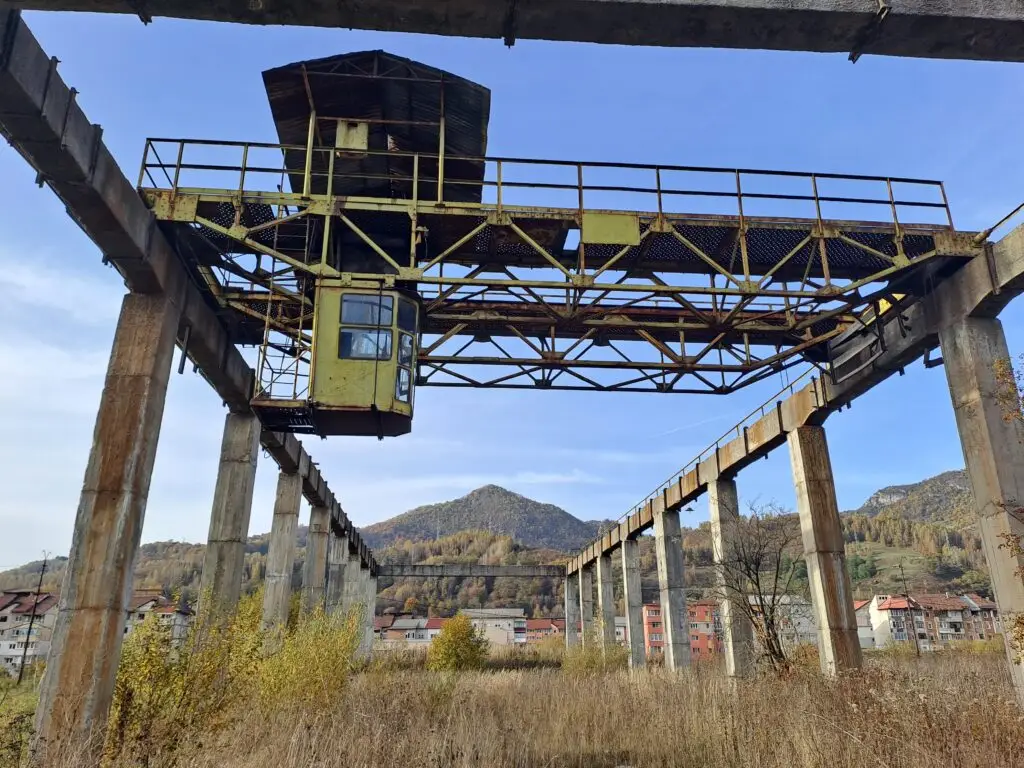
Where is the Jiu Valley heading? Is there a life after coal, based on small local entrepreneurship, industrial heritage and beauty of nature? Local activists tell me that this new life must be built with people’s own hands. No one, neither European Union nor the Romanian government, will create a plan for those who still live in the Valley.
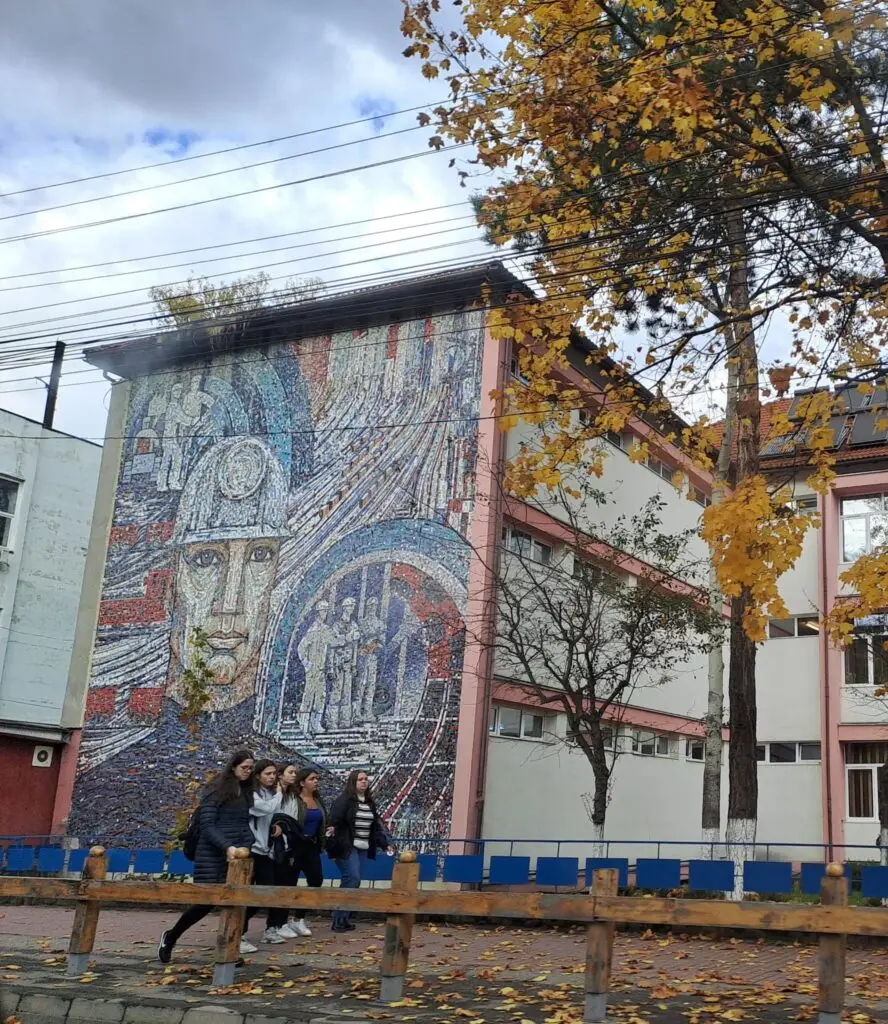
Forward to the future, but what future? A group of young girls from Vulcan walk by a mosaic dedicated – of course – to miners. Mining started in this city in 1850, but, unlike previous generations, the young women will not work in industry. It is not certain even if they stay in this 19,000-people city for longer: statistics suggest that if they do not find work in services sector, they will leave the Valley in a few years.
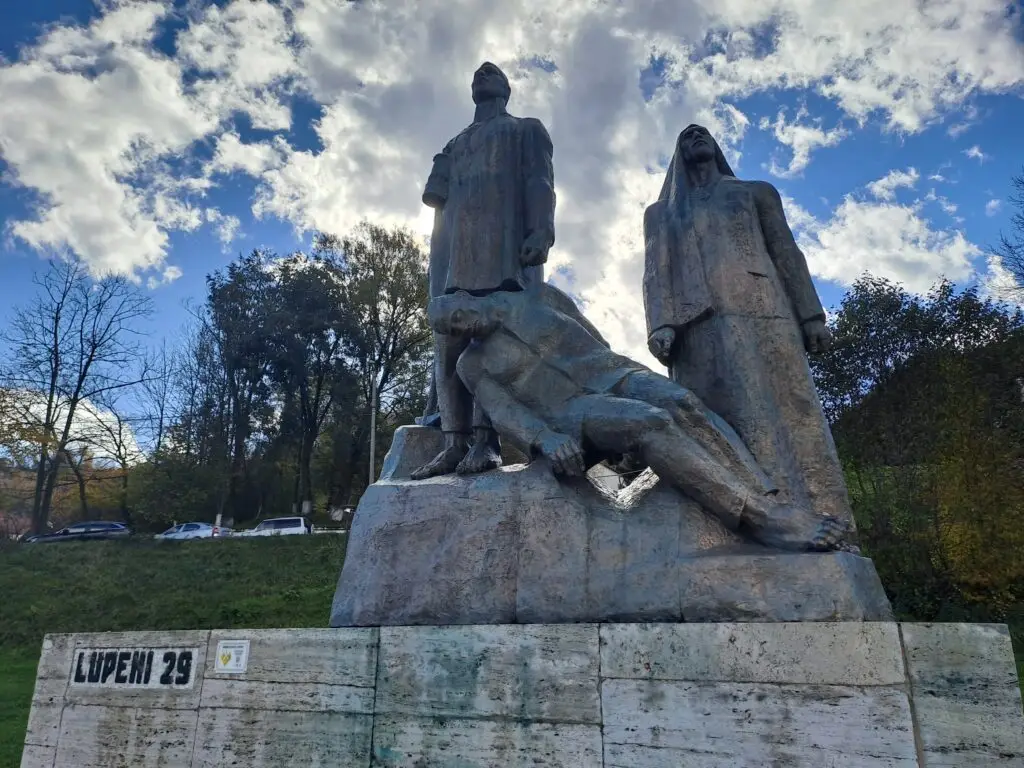
What future lies ahead? The miners portrayed over the body of a dead comrade in the Lupeni memorial to the 1929 strike apparently believed in a bright future which will be built by workers’ movement. Modern Romania, however, has no powerful workers’ movement. Social capital, mutual trust and willingness to work together also need to be rebuilt in the Jiu Valley – if it is not too late.
This interview was produced in the scope of a journalist travel to the Jiu Valley, realised with the help of Reporting Democracy.
Subscribe to Cross-border Talks’ YouTube channel! Follow the project’s Facebook and Twitter page! And here are the podcast’s Telegram channel and its Substack newsletter!
Like our work? Donate to Cross-Border Talks or buy us a coffee!
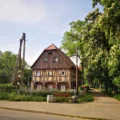
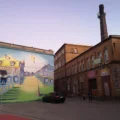
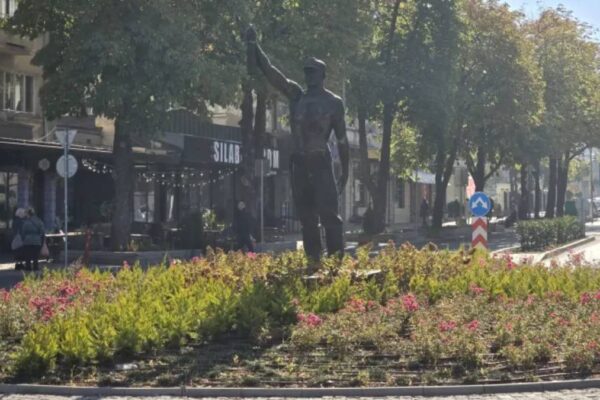
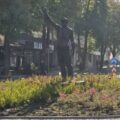
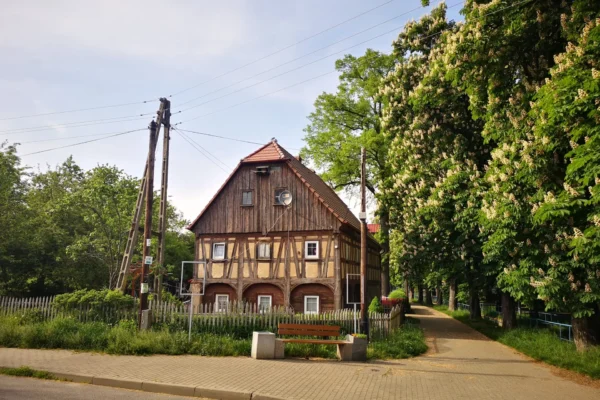
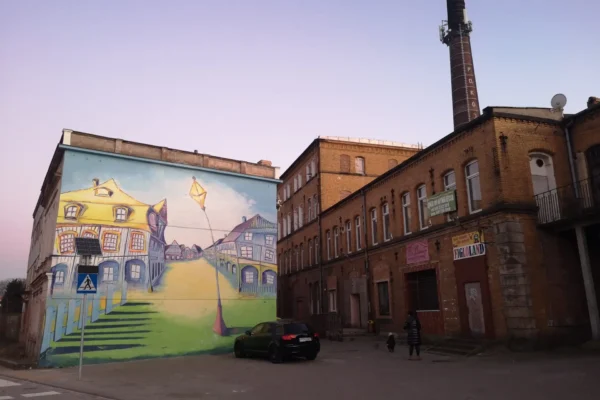
![There is no just transition without trust and social capital [interview]](https://www.foundintransition.eu/wp-content/uploads/2024/01/Paroseni-scaled-1200x675-1-600x400.jpg)
![There is no just transition without trust and social capital [interview]](https://www.foundintransition.eu/wp-content/uploads/2024/01/Paroseni-scaled-1200x675-1-120x120.jpg)